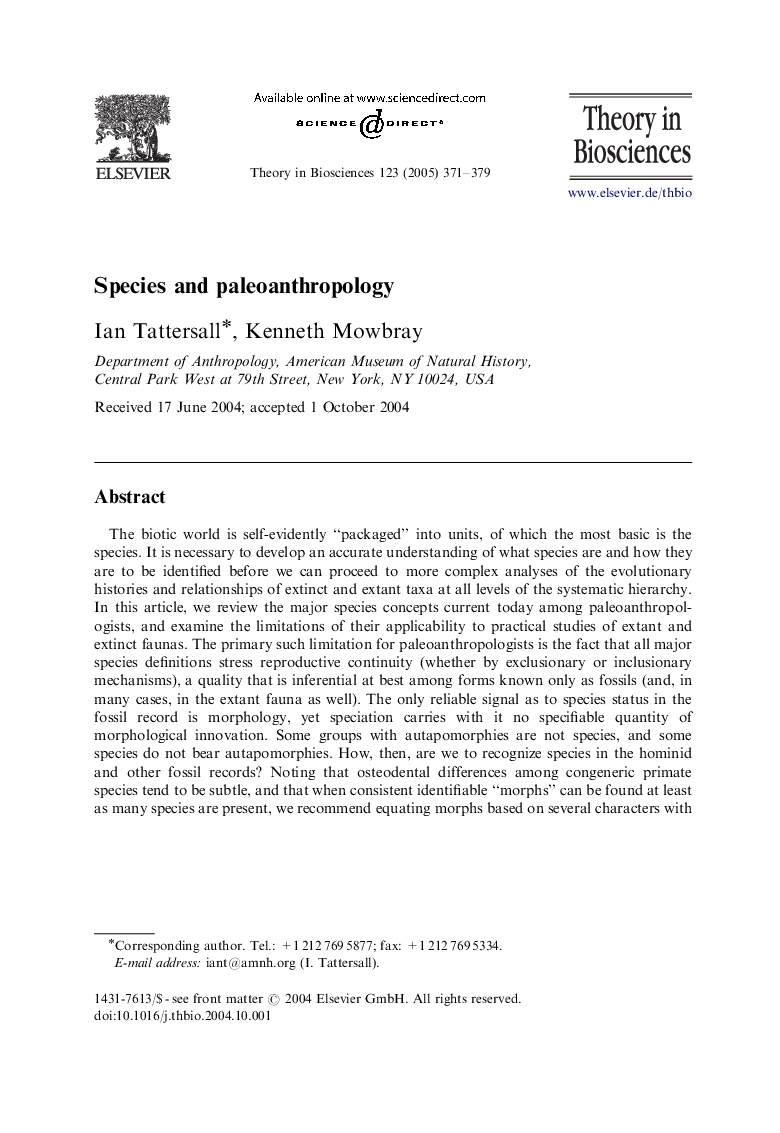| کد مقاله | کد نشریه | سال انتشار | مقاله انگلیسی | نسخه تمام متن |
|---|---|---|---|---|
| 9471789 | 1624177 | 2005 | 9 صفحه PDF | دانلود رایگان |
عنوان انگلیسی مقاله ISI
Species and paleoanthropology
دانلود مقاله + سفارش ترجمه
دانلود مقاله ISI انگلیسی
رایگان برای ایرانیان
کلمات کلیدی
موضوعات مرتبط
مهندسی و علوم پایه
ریاضیات
مدلسازی و شبیه سازی
پیش نمایش صفحه اول مقاله

چکیده انگلیسی
The biotic world is self-evidently “packaged” into units, of which the most basic is the species. It is necessary to develop an accurate understanding of what species are and how they are to be identified before we can proceed to more complex analyses of the evolutionary histories and relationships of extinct and extant taxa at all levels of the systematic hierarchy. In this article, we review the major species concepts current today among paleoanthropologists, and examine the limitations of their applicability to practical studies of extant and extinct faunas. The primary such limitation for paleoanthropologists is the fact that all major species definitions stress reproductive continuity (whether by exclusionary or inclusionary mechanisms), a quality that is inferential at best among forms known only as fossils (and, in many cases, in the extant fauna as well). The only reliable signal as to species status in the fossil record is morphology, yet speciation carries with it no specifiable quantity of morphological innovation. Some groups with autapomorphies are not species, and some species do not bear autapomorphies. How, then, are we to recognize species in the hominid and other fossil records? Noting that osteodental differences among congeneric primate species tend to be subtle, and that when consistent identifiable “morphs” can be found at least as many species are present, we recommend equating morphs based on several characters with species - realizing that only one or two distinctive characters may not make a morph. In this way, our views of the phylogenetic histories of higher taxa may be oversimplified, but their essential patterns will not be distorted.
ناشر
Database: Elsevier - ScienceDirect (ساینس دایرکت)
Journal: Theory in Biosciences - Volume 123, Issue 4, 15 April 2005, Pages 371-379
Journal: Theory in Biosciences - Volume 123, Issue 4, 15 April 2005, Pages 371-379
نویسندگان
Ian Tattersall, Kenneth Mowbray,